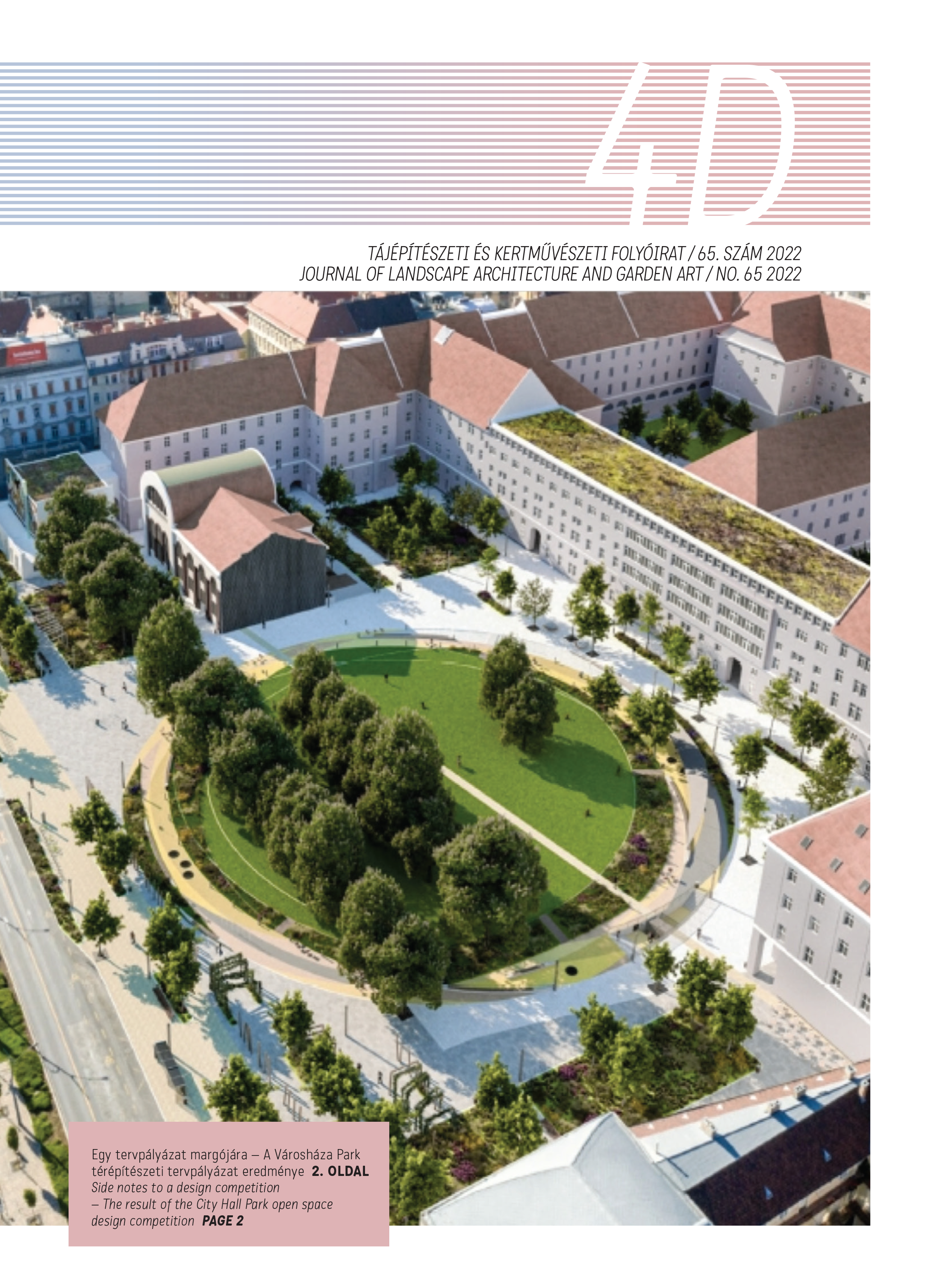Side notes to a design competition
The result of the City Hall Park open space design competition
DOI:
https://doi.org/10.36249/4d.3391Abstract
Budapest has a lot of attractive public squares and parks, but so far it has lacked a central main square of outstanding importance, that could function as a kind of agora. Many people say that the real main square of Budapest is the section of the Danube from the Margaret Bridge to the Liberty Bridge, which is 400 meters wide on average and is framed by the magnificent view of the waterfront cityscape of Pest and Buda. Due to the central location of the area, and from the point of view of the landscape, this is true, however, the water surface of the Danube cannot, of course, fulfil the function of a classical forum, the urban main square for the use by the public. Hősök tere (HeroesSquare) which could function as the city's main square due to its design, size and spacious pedestrian surfaces, is far from the city centre and, carved out of the green space of the City Park, is part of the former urban fringe. Due to the bordering museum buildings, it can rather be considered as a cultural and tourism facility or due to its size, a suitable venue for events and demonstrations, however, it is not a main square in the classical sense
Downloads
Published
Issue
Section
License
Copyright (c) 2022 Jámbor Imre

This work is licensed under a Creative Commons Attribution-NonCommercial-NoDerivatives 4.0 International License.
A folyóirat Open Access (Gold). Cikkeire a Creative Commons 4.0 standard licenc alábbi típusa vonatkozik: CC-BY-NC-ND-4.0. Ennek értelmében a mű szabadon másolható, terjeszthető, bemutatható és előadható, azonban nem használható fel kereskedelmi célokra (NC), továbbá nem módosítható és nem készíthető belőle átdolgozás, származékos mű (ND). A licenc alapján a szerző vagy a jogosult által meghatározott módon fel kell tüntetni a szerző nevét és a szerzői mű címét (BY).






 intézetigazgató: Dr. Fekete Albert
intézetigazgató: Dr. Fekete Albert


